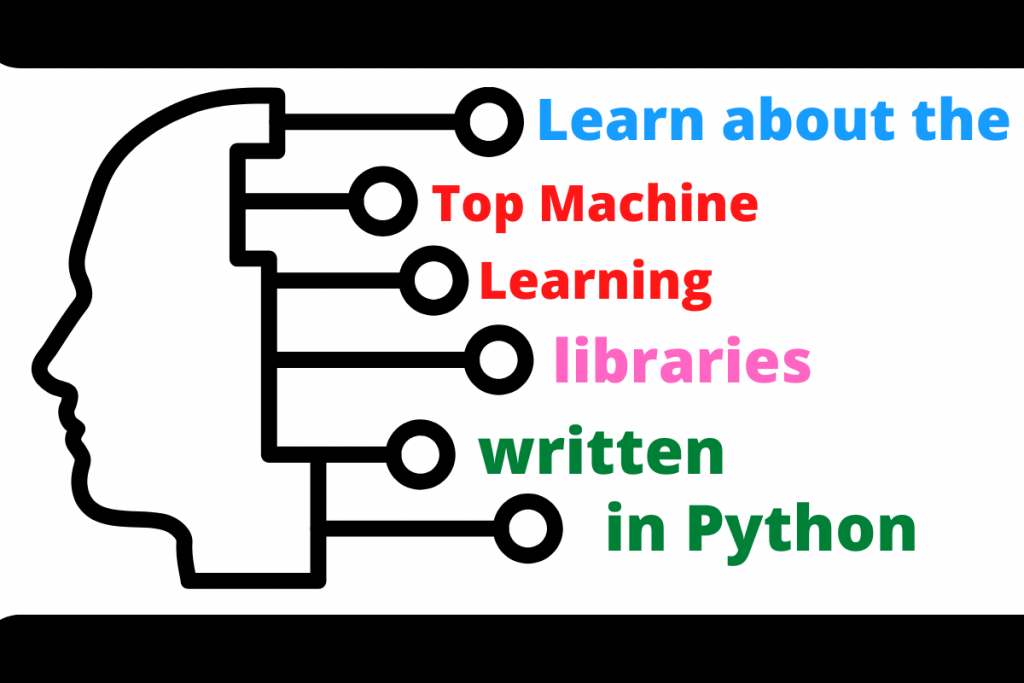Hello learner! Are you a Machine Learning Enthusiast?
Does Machine Learning make you excited?! If your answer is YES, then you should definitely be aware of the libraries I have listed below.
Library 1: Python Keras
Purpose of the module
Keras is an open-source library that is mainly used for implementing deep learning concepts and models on both CPU and GPU. It is mostly used to implement Neural Networks in a faster and more efficient manner.
Advantages
- It enables direct, fast, and efficient implementation of deep neural networks.
- It also supports most of the core libraries of TensorFlow ( another library in python )
- It comes with great community support as well.
Disadvantages
- Sometimes its user-friendliness makes it slower even on GPU.
- Error logs in the case of Keras are difficult to debug which gets annoying at times.
Library 2: Python Matplotlib
Purpose of the module
Matplotlib library is majorly used for visualization of images, various types of plots, and images. It is platform-free and can be operated on the Windows, Mac OS, and Linux networks.
Matplotlib has become one of the most widely used graphic libraries for numerical and data graph plotting alongside the Python programming language.
Advantages
- It’s an open source library which implies that one doesn’t need to play for the license to use the library
- It’s very customizable and extensible library
- It’s very portable.
To go into depths of the library check out this tutorial.
Library 3: Python NLTK
Purpose of the module
NLTK is one of the most popular libraries used for education and research purposes. It is one the best options for accurate text analysis.
The library comes with a lot of pre-trained models and corpora (bulk of data) which makes analysis of data much easier for us.
Advantages
- The library supports a larger number of languages when compared to other libraries available in Python
- A large variety of open-source NLP libraries are available for Python programmers under NLTK
Disadvantages
- It is slow, difficult to use and understand initially
- Neural networks implementation not supported
To go into depths of the library check out the tutorials mentioned below:
Library 4: Python NumPy
Purpose of the module
NumPy stands for Numerical Python which helps programmers store and handle large amounts of data effectively and efficiently in form of arrays. It is an open-source library and you can use it freely.
Advantages
- Take lesser memory space as well as runtime speed when compared with lists and tuples.
- Very good for data analysis
- Support complex operations on array
Disadvantages
- Insertion and deletion operations can get costly for numpy array
- Handling NaN ( Not a Number ) value
To get a quick start to numpy module implementation check out the tutorial right here.
Library 5: Pandas
Purpose of the module
Pandas library is responsible to deal with the data loading, processing, and analyzing which involves loading, preparing, manipulating, modeling, and analyzing the dataset. It is a very flexible and efficient library.
Advantages
- More results are accomplished with less code
- Efficient handling of huge data can take place using pandas
Disadvantages
- Some commands of pandas turn out to be more complex that the others
- Have a very steep learning curve
To start off with pandas module implementation check out the tutorial right here.
Library 6: Scikit-Learn
Purpose of the module
Sklearn or scikit-learn library is one of the most useful open-source libraries that can be used to implement Machine Learning models in Python. Some of the models include regression, classification, dimensionality reduction, and clustering.
Advantages
- Easy to use
- Very versatile and handy
- Provides elaborate API documentation
Disadvantages
This library is not the best choice for in-depth learning algorithms.
Library 7: TensorFlow
Purpose of the module
Tensorflow is a Google-built and developed Open Source machine learning framework. It provides an abstract and high-level method for arranging computational programming on a low level.
the library also includes supporting libraries that can allow our software to run without changes on regular CPU. It is also supported by various devices.
Advantages
- Better graph representation
- Scalable and efficient
- Excellent community support
- High performance
Disadvantages
- Hard to find an error and difficult to debug
- Very low level with a steep learning curve
- No support for OpenCL found.
Conclusion
In this article, you learned a little more about the topmost libraries used for Machine Learning which are written in Python. Libraries/modules help a programmer to avoid writing some pieces of code over and over again.
Stay tuned to read more!
Thank you for reading!
